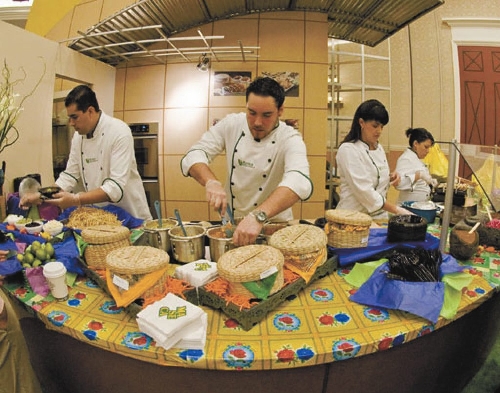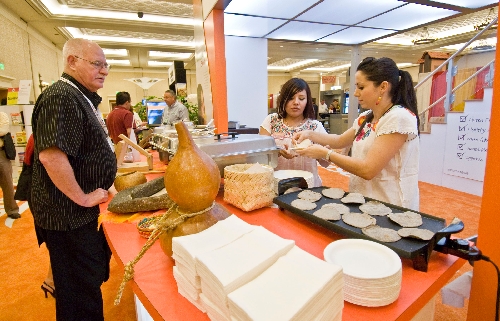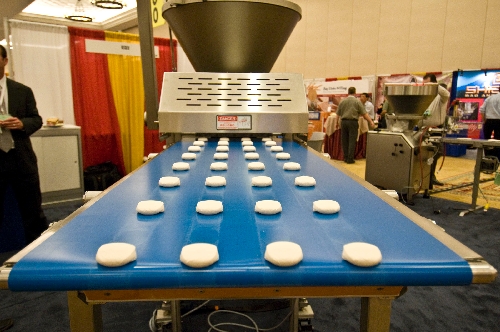Tortilla industry wrapped in trend toward new ingredients and flavors
Mexican immigrants helped to change American eating habits when they brought the tortilla with them. Now, Americans are changing the tortilla.
Several companies exhibiting at the Tortilla Industry Association convention at Caesars Palace earlier this week talked up new varieties of tortillas such as gluten-free, whole grain, high-fiber or low-carb. Many of the new formulations are driven by consumer demand north of the border, both from Hispanics and other ethnic groups, that have become increasingly concerned about chowing down too much fat or too many empty calories.
"Hispanic people are getting bigger and bigger and we need to change," said Eric Sanchez, a sales manager with Reiser, which makes equipment that cuts mounds of dough that can be flattened into finished tortillas. "The second generation of immigrants are changing their eating habits."
But the broader population has cast a larger influence, according to Humberto Zamora, senior applications technologist at SunOpta Ingredients.
"This (new ingredients trend) is not so much for Hispanics as non-Hispanics," he said. "Wraps are everywhere now, even on the menu of McDonald's. You can't get any more American than McDonald's."
But some at the convention predicted that the idea of a tortilla healthier than the traditional corn and white flour styles would catch on only gradually. With most any type of food, a designation such as organic or natural often comes with a higher price and tortillas are no exception.
"The difficulty is how to get the price down," said John Brandquist, a national sales manager with Caremoli, which manufactures natural ingredients. "In the tortilla industry, pennies go a long way. If a consumer sees a tortilla that costs more, he will wonder why he should pay it when the tortillas he has eaten for years are perfectly good."
And, he said, manufacturers would have to spend millions of dollars to reconfigure their production lines for the new varieties.
The association estimates that tortilla sales will run about $11 billion this year, making it the second-most popular baked item in the United States after bread. Sales have continued to grow in low double-digit percentages, by its tracking.
Tortillas have branched into other directions besides ones that are supposed to be healthier. One maker, Blue Marble Brands, has come out with flavors such as rye and pumpernickel that mimic the bagels found in New York delis.
Azteca Milling, another manufacturer, has seen sales growth slow in the past five years, said Jose de Leon, a sales director.
"It's a touchy subject, but it has to do with immigration laws, not changes in the laws but more enforcement," he said.
To pick up revenues in niche markets beyond its staple corn and flour tortillas, the company has rolled out several new varieties.
Taquera, one new brand, is meant to be sturdier so that it can hold salsa and other nonsolid fillings without dissolving in a couple of minutes.
Another, called nixta masa, is meant to come closer to the traditional texture and taste partly by removing preservatives. Where regular manufactured tortillas have a shelf life that run two to four weeks to suit supermarkets, nixta masa is good for only three days. In Mexico, people buy fresh tortillas almost daily, de Leon said.
"We see a need for national products with fewer preservatives and additives," he said.
However, said Zamora, an urban lifestyle in the United States with both spouses working sometimes demotes the importance of freshness.
"Convenience is important," he said. "You need something you can buy and use over the course of a week."
Contact reporter Tim O'Reiley at toreiley@reviewjournal.com or 702-387-5290.



















